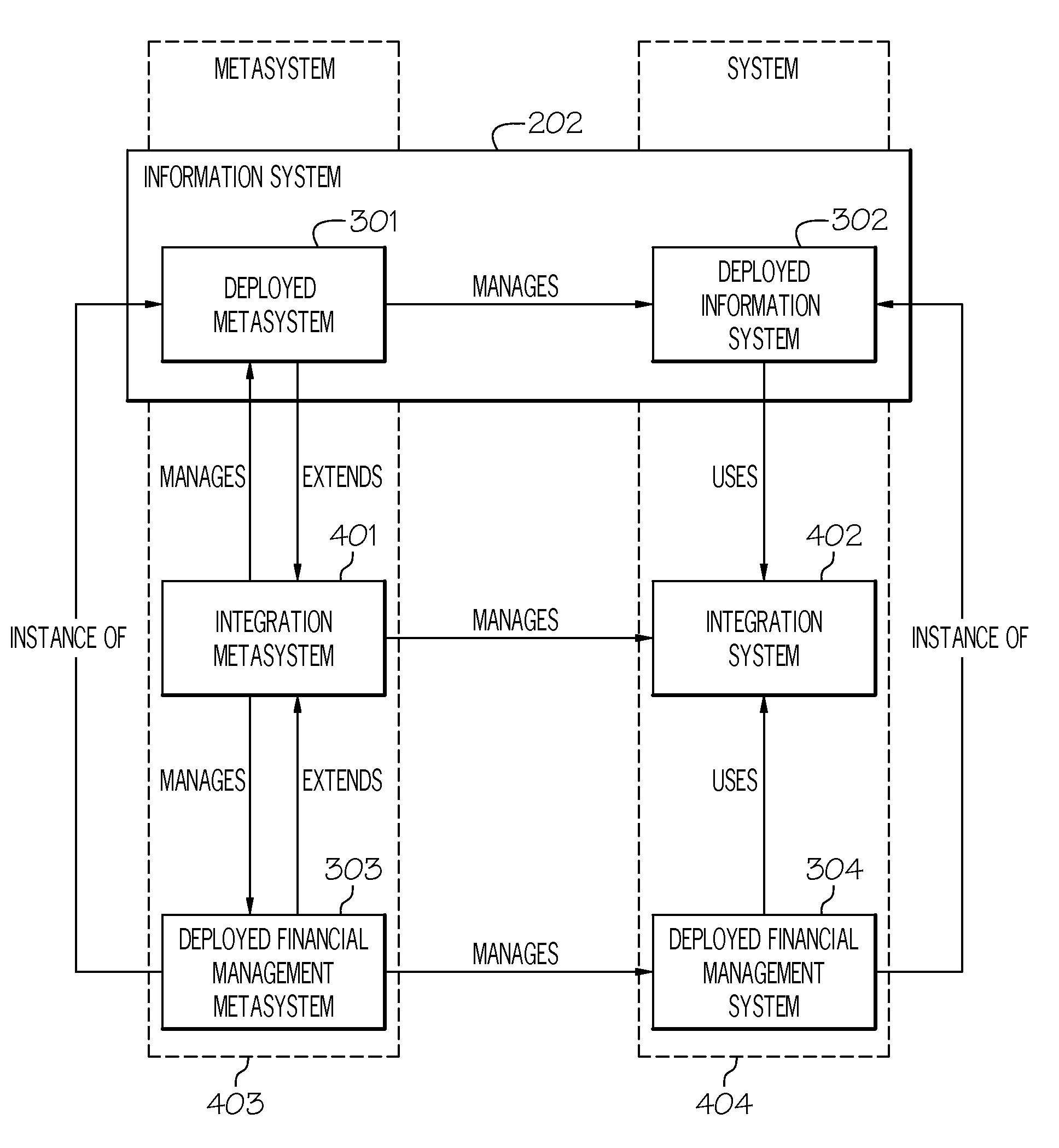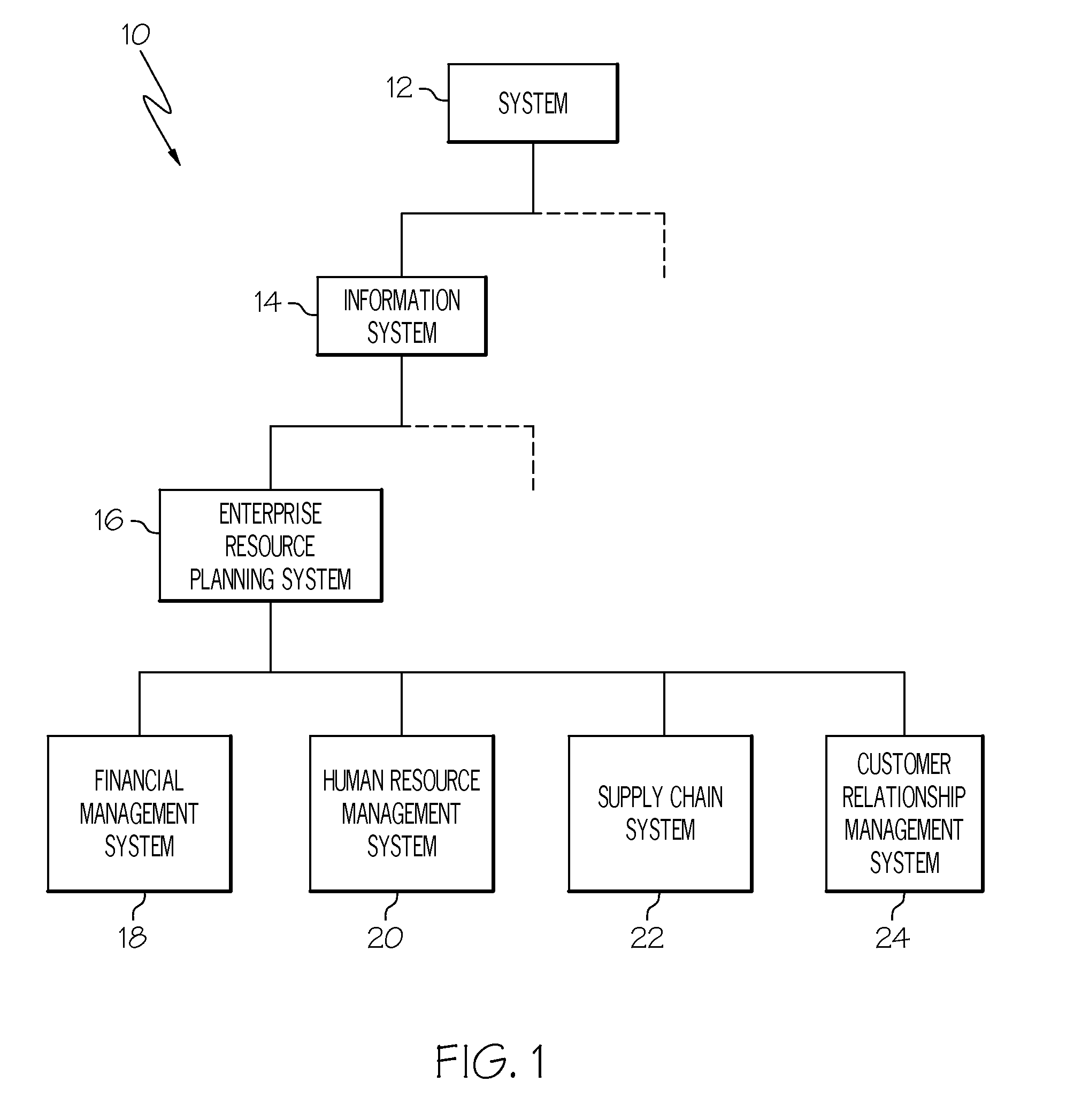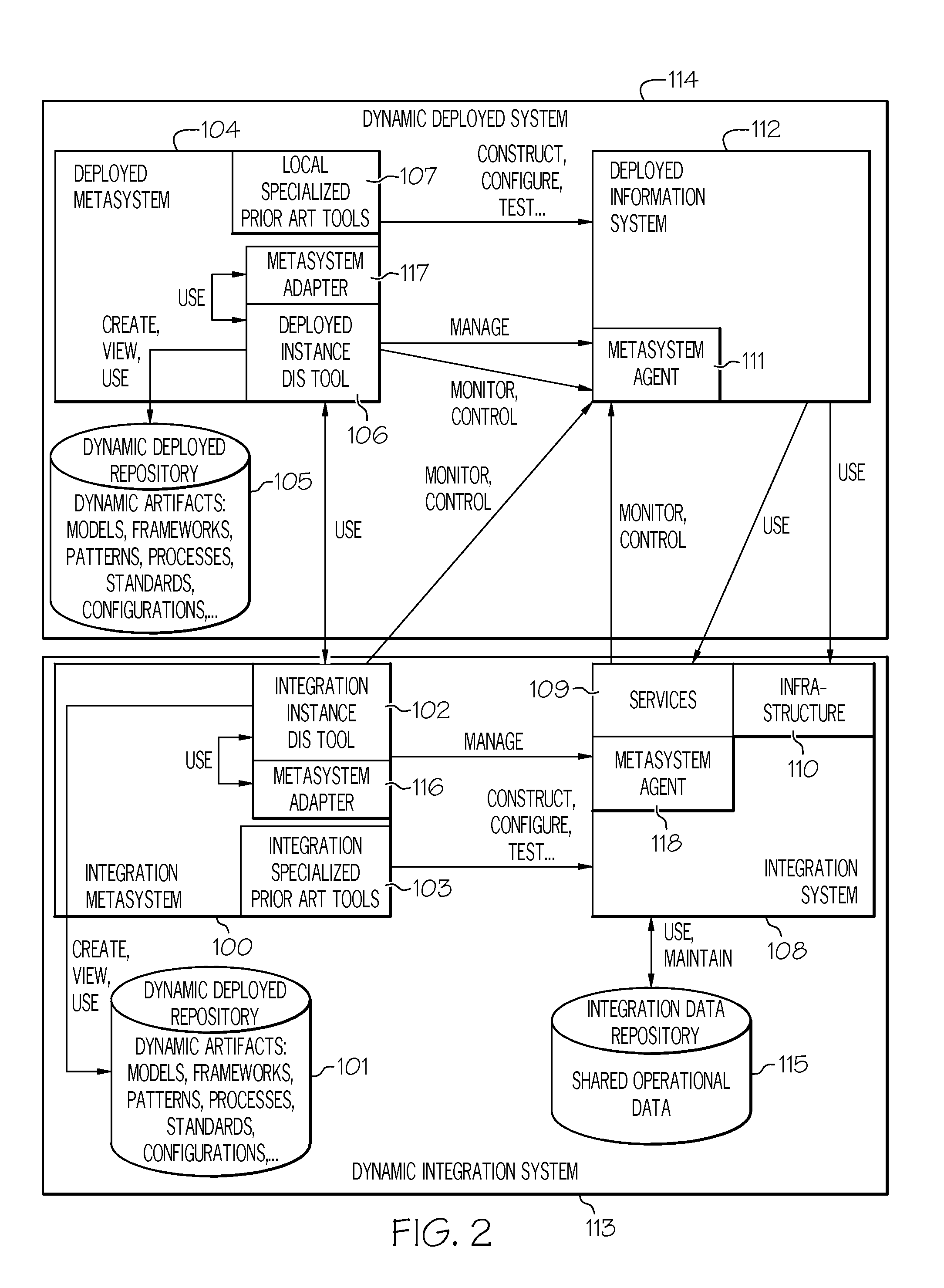Dynamic information systems
a dynamic information system and information system technology, applied in database management systems, instruments, data processing applications, etc., can solve the problems of poor coordination between static metasystems and the systems they manage, poor coordination between integration systems and their corresponding deployed information systems, and poor integration
- Summary
- Abstract
- Description
- Claims
- Application Information
AI Technical Summary
Benefits of technology
Problems solved by technology
Method used
Image
Examples
Embodiment Construction
Introducing Metasystems
[0085]Systems and their integration are a fundamental resource of most enterprises. It follows that a system for the management of this resource can itself be viewed as a type of ERP system 16, one that manages as a resource the plurality of information systems deployed by the enterprise. This gives rise to a new view of systems. A system that manages the systems resource is described as a metasystem. The metasystem embeds data representing information that describes the system.
[0086]An information system that reaps business value, by directly supporting the attainment of some business purpose of the enterprise is termed a “deployed information system”302, as shown in FIG. 3. An example is a deployed financial management system 304. An information system that supports management of a deployed information system is termed a “deployed metasystem”301. An example is a deployed financial management metasystem 303. Here, the information system 202 is defined as comp...
PUM
 Login to View More
Login to View More Abstract
Description
Claims
Application Information
 Login to View More
Login to View More - R&D
- Intellectual Property
- Life Sciences
- Materials
- Tech Scout
- Unparalleled Data Quality
- Higher Quality Content
- 60% Fewer Hallucinations
Browse by: Latest US Patents, China's latest patents, Technical Efficacy Thesaurus, Application Domain, Technology Topic, Popular Technical Reports.
© 2025 PatSnap. All rights reserved.Legal|Privacy policy|Modern Slavery Act Transparency Statement|Sitemap|About US| Contact US: help@patsnap.com



